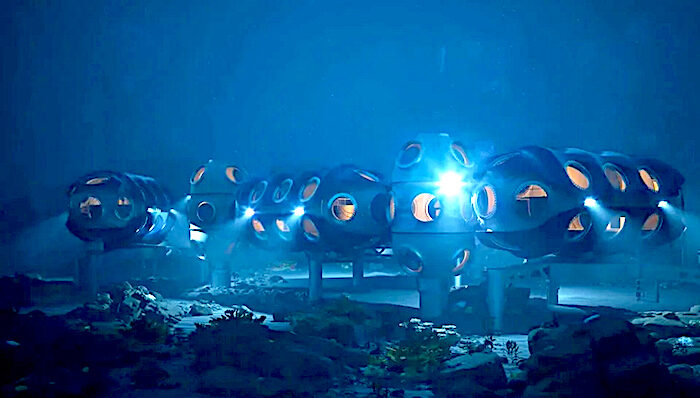
© DEEPSentinel underwater research station image
While many scientists are looking to the stars for exploration, experts at the
United Kingdom's DEEP Research Labs are setting up habitable research stations as much as
656 feet under the sea.
It's part of
a module-based habitat system in development called
Sentinel that is intended to be
open to public signup for various science research projects by 2027,
according to a story by Interesting Engineering, which said the project was like "an International Space Station for the oceans."
Touted as a haven for
underwater research, the habitat is also going to be a
case study in sustainability and extended stays (for about a
month) deep in the sea.
The tech is designed to accommodate "six-crew, short-term deployments" up to "50-crew ... semi-permanent research stations."It's a scenario not all that different from science fiction movie
plotlines. And any "
Sealab" fans out there will be amused to hear DEEP was actually
founded in 2021.
Sentinel designers, however, said safety is a priority. So, barring a
megalodon attack, the habitat should be an
abode for research, learning, and archaeology.
The goal is to form partnerships with universities and multiple nations as part of the learning experience — and surely hope they can get along better than the Sealab crew.
"DEEP represents to me the best chance we'll ever have for
returning habitats to the sea floor, for peaceful purposes. Certainly, within my lifetime," John Clarke, the former head of the U.S. Naval Experimental Diving Unit,
said, as quoted on DEEP's website.
Sentinels are claimed to last for 20 years, providing decades of habitat for research to be based from, DEEP leaders
said. Innovative Engineering
reported that DEEP has started a training program to keep the
pipeline full of expert divers. They will transport the modules below the surface, as well as perform maintenance once they are set up.
The modular systems are
built to be "endlessly configurable" and "completely customizable," according to DEEP. A video
clip on X, formerly known as Twitter, shows a digital rendering of the habitat. Numerous cylinder-shaped, interconnected modules are shown with submarines around them.
The interior looks like a combination of the USS
Enterprise and a modern
camper. Efficient design concepts have needed amenities, including a bathroom with a closed-loop, bio-reactor waste system that's in development,
according to the designers. There are even "moonpools" for "diving excursions" and labs for research,
per DEEP.
Sentinels are planned to have
power systems utilizing "micro-grid architecture." A satellite communications buoy will provide contact with land-dwellers.
Surface independence is one of the company's design tenets. So, DEEP experts
said that Sentinels won't need an expensive support ship floating overhead. They'll have what they need below for long-term operations.
What's more, underwater living could provide lessons for those of us still pining for the stars. The environment makes for a great training ground for space missions, the experts
reported.
"DEEP is leading the way in development and expansion of novel approaches for a sustained intersection of deep sea and humanity," Dawn Kernagis, a crew member of NASA's
Neemo XXI undersea mission,
said on DEEP's website.
The vision is to learn more about our underwater world, the continental shelves, and other wonders, while not impacting them,
according to DEEP.
"We love our planet and we adore our oceans. That's why all of our products are designed with longevity and autonomy as a core principle, and why our products are designed to leave as close to no impact on the sea-bed as possible," the project's website
states.
Reader Comments